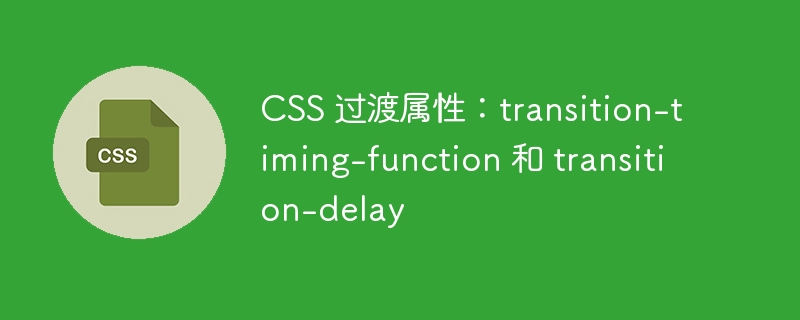

CSS transition properties: transition-timing-function and transition-delay, specific code examples are required
Introduction:
In front-end development, CSS transition (Transition ) is one of the important means to achieve page animation effects. The transition-timing-function and transition-delay are two key properties that allow us to more accurately control the time and speed of the transition animation. This article will introduce these two properties in detail and provide specific code examples for readers' reference.
1. Transition-timing-function
The transition-timing-function attribute is used to control the speed change process of the transition animation. By specifying different function values, we can obtain different animation effects, such as uniform changes, accelerated changes, or decelerated changes. Common transition-timing-function values include the following:
The following is a specific code example that shows how to use the transition-timing-function attribute to achieve different transition animation effects:
.box {
width: 200px;
height: 200px;
background-color: red;
transition: width 2s ease-in-out;
}
.box:hover {
width: 400px;
}In this example, when the mouse hovers When on the box, the width will transition from 200px to 400px. And because we set a transition time of 2s in the transition attribute and used ease-in-out to specify the speed change of the transition animation, there will be an effect of first accelerating and then decelerating.
2. Transition-delay
The transition-delay attribute is used to specify the delay time of the transition animation, that is, the time interval from triggering the change to the actual start of the transition. By specifying a time value for transition-delay, we can make the animation start executing after the specified delay period.
Here is a specific code example that shows how to use the transition-delay attribute to achieve a delayed transition effect:
.box {
width: 200px;
height: 200px;
background-color: red;
transition: width 2s ease-in-out;
transition-delay: 1s;
}
.box:hover {
width: 400px;
}In this example, when the mouse is hovering over the box, the width will Transition from 200px to 400px after a 1s delay. By specifying the transition-delay property value as 1s, we implement a delayed transition effect.
Conclusion:
CSS transition properties transition-timing-function and transition-delay are used to control the speed change and delay time of the transition animation respectively. By rationally using these two attributes, we can create rich and diverse animation effects and improve user experience. Through detailed introduction and specific code examples, this article hopes that readers can become more familiar with and understand the use of these two attributes so that they can be used flexibly in actual development.
The above is the detailed content of CSS transition properties: transition-timing-function and transition-delay. For more information, please follow other related articles on the PHP Chinese website!